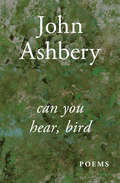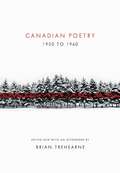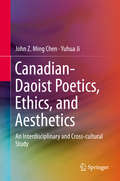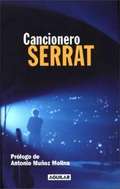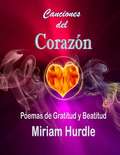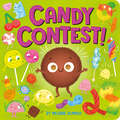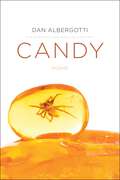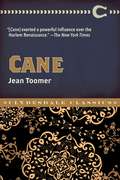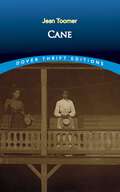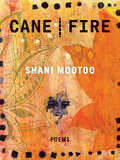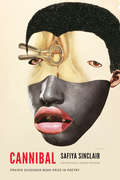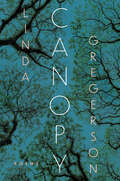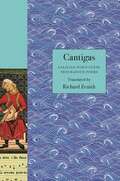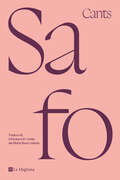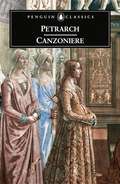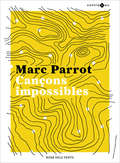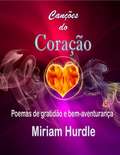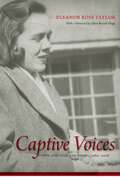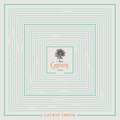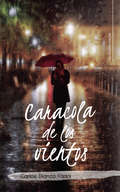- Table View
- List View
Can Poetry Save the Earth? A Field Guide to Nature Poems
by John FelstinerPoems vivifying nature have gripped people for centuries. From Biblical times to the present day, poetry has continuously drawn us to the natural world. In this thought-provoking book, John Felstiner explores the rich legacy of poems that take nature as their subject, and he demonstrates their force and beauty. In our own time of environmental crises, he contends, poetry has a unique capacity to restore our attention to our environment in its imperiled state. And, as we take heed, we may well become better stewards of the earth. In forty brief and lucid chapters, Felstiner presents those voices that have most strongly spoken to and for the natural world. Poets--from the Romantics through Whitman and Dickinson to Elizabeth Bishop and Gary Snyder--have helped us envision such details as ocean winds eroding and rebuilding dunes in the same breath, wild deer freezing in our presence, and a person carving initials on a still-living stranded whale.
Can You Hear, Bird: Poems (Poesía/cátedra Ser.)
by John AshberyA 1995 collection of poems that finds John Ashbery at his most conversational, funny, and surprisingIn Can You Hear, Bird, John Ashbery&’s seventeenth collection, language is both a plaything and a sandbox. The poems are arranged not in the order of their composition but alphabetically, by the first letter in their titles, like the neatly arrayed keys of some fabulous Seussical instrument. In line after line, Ashbery demonstrates his alertness to language as it is spoken, heard, broadcast, and dreamed—and sets himself the task of rewriting, redefining, and revising the American idiom we think we know so well. Can You Hear, Bird is a decisive example of the uniquely Ashberyan sensibility his many fans love, revealing a generous and acute chronicler of the everyday bizarre, an observant and humane humorist, and an ear trained on decoding our modern world&’s beguiling polyphony.
Canadian Poetry 1920 to 1960 (New Canadian Library)
by Brian TrehearneThe best in four decades of exceptional Canadian poetry, now in a limited hardcover edition.The poets in this anthology, all of whom matured creatively between 1920 and 1960, considered it one of their primary obligations to modernize Canadian writing, to bring the country's poetry out of late Romantic stasis after the Great War into a fertile and combative response to the cultural, political, technological, philosophical, religious, and economic conditions of the modern era. In their common reaction against Romanticism, and in their commitments to modern poetry's possibilities of profound newness, the poets in this volume make up one great movement in Canada's cultural history. The anthology includes:* 250 poems by 44 poets* Regionally diverse voices from Newfoundland, the Maritimes, Quebec, Ontario, the Prairies, and B.C.* Extensive selections of the work of major poets* An afterword and biographical headnotes provide important historical and literary contextThe poets included in Canadian Poetry from 1920 to 1960 are:Frank Oliver Call; Louise Morey Bowman; Raymond Knister; Joe Wallace; E.J. Pratt; W.W. E. Ross; F.R. Scott; A.J.M. Smith; Charles Bruce; Earle Birney; A.M. Klein; Dorothy Livesay; Leo Kennedy; Audrey Alexandra Brown; Kenneth Leslie; Robert Finch; Floris Clark McLaren; L.A. Mackay; Anne Marriott; Bertram Warr; Patrick Anderson; P.K. Page; Kay Smith; Miriam Waddington; Margaret Avison; A.G. Bailey; Louis Dudek; John Glassco; Ralph Gustafson; Raymond Souster; Irving Layton; Roy Daniells; Douglas LePan; George Whalley; James Reaney; Elizabeth Brewster; George Johnston; Goodridge MacDonald; Jay MacPherson; Anne Wilkinson; Phyllis Webb; Wilfred Watson; R.A.D. Ford; Eldon Grier.From the Hardcover edition.
Canadian-Daoist Poetics, Ethics, and Aesthetics: An Interdisciplinary and Cross-cultural Study
by John Z. Ming Chen Yuhua JiThis monograph takes an interdisciplinary and cross-cultural approach to 20th and 21st -century Canadian Daoist poetry, fiction and criticism in comparative, innovative and engaging ways. Of particular interest are the authors' refreshing insights into such holistic and topical issues as the globalization of concepts of the Dao, the Yin/Yang, the Heaven-Earth-Humanity triad, the Four Greats, Five Phases, Non-action and so on, as expressed in Canadian literature and criticism - which produces Canadian-constructed Daoist poetics, ethics and aesthetics. Readers will come to understand and appreciate the social and ecological significance of, formal innovations, moral sensitivity, aesthetic principles and ideological complexity in Canadian-Daoist works.
Cancer Poetry
by Iain TwiddyThis is the first critical study to offer a sustained analysis of the theme of cancer in contemporary poetry. In discussing works by major poets, including Paul Muldoon, Jo Shapcott and Christopher Reid, Cancer Poetry traces the complex ways in which poets represent cancer, and assesses how poetry can be instrumental to emotional recovery.
Cancionero de Serrat
by Joan Manuel SerratCompilación de las canciones del poeta catalán, en cuyo prólogo el escritor Antonio Muñoz Molina dice: Tete Montoliú, que fue uno de los más altos músicos que hemos tenido en España, amaba hondamente las canciones de Serrat, e hizo versiones exquisitas de algunas de ellas. Despojadas de la letra y de la voz que canta, resumidas en la musicalidad abstracta del piano, las canciones muestran su médula simple y poderosa, que es el misterio de ese arte, tan sutil y tan cercano a la vida usual que los entendidos a veces no acaban de verle el mérito, del mismo modo que los aficionados podemos disfrutarlo con una relajada falta de atención, como se disfrutan, por cierto, algunos de los grandes placeres de la vida (...) "...Si el tiempo, en el fondo, es la materia y el tema de casi todas o de todas las artes, en la canción el tiempo está en un estado de concentración máxima, de pureza absoluta, y es por eso por lo que puede afectarnos tanto: el niño escucha en la radio una canción y se emociona por cosas que ignora, y vislumbra ante sí el tiempo futuro de su vida, y le parece que siente la hondura de un pasado que para él aún es muy breve. Las canciones abren anchas avenidas de tiempo, perspectivas de lejanía hacia el ayer y el mañana, despiertan en nosotros el eco de lo que sabemos que somos y también el de lo que podríamos ser o haber sido(...) La poesía de lo cotidiano, la búsqueda de la belleza, de la vivencia del encuentro y la libertad, las emociones de siempre. "Una buena canción requiere dos clases de talento: el talento de intuir una forma breve y en apariencia simple en la que ha de caber comprimida la complejidad de un relato y la inmediatez de una sensación, de un estado de ánimo; y también el talento de intuir la naturaleza del tiempo en el que uno vive, no de contarlo, sino de expresarlo en su tonalidad específica, de atraparlo en su fugacidad como se fija un aroma en un frasco de perfume...."
Canciones Del Corazón: Poemas de Gratitud y Beatitud
by Miriam HurdlePoemas de gratitud y beatitud Canciones del Corazón es una colección de poesía basada en las verdaderas experiencias de Miriam Hurdle. Canciones del Corazón toca la melodía melancólica del sufrimiento y trasciende a la melodía de la serenidad y la paz. Es un camino recorrido con optimismo, esperanza y aprecio en medio de circunstancias de dolor y un cáncer impredecible. También celebra el amor verdadero y las relaciones satisfactorias. Hurdle en su colección de poesía incluye nueve temas: Canciones de la Naturaleza, Canciones de Disonancia, Canciones de Curación física, Canciones de Matrimonio, Canciones de Paternidad, Canciones de Tributo, Canciones de Reflexion, Canciones de Desafío y Canciones de Inspiración. Cada uno de estos temas cubre varios aspectos de su experiencia de vida. Muchos poemas están ilustrados con sus fotos y acuarelas. Los poemas de esta colección son inspiradores para la mente, el corazón y el espíritu. Los lectores harán eco con estas experiencias.
Candy Contest!
by Melanie DemmerThis board book celebrates candy, friendship, and the differences that make us unique... "because the world is sweeter when everyone shines bright!"In this book, various candies in a bowl are competing to see who's best: Chocolates fight over who is most creamy.Marshmallows and Marzipan each say they&’re dreamy.Taffy and Caramel tumble, tug, and stick,while Butterscotch and Lemon Drop fall, roll, and kick. When tensions rise and their contest turns sour, Peanut Butter Cup reminds the candies that they each have their own talent and flavor. In the end, the candies realize that their friendship is what matters most, and they agree to stop fighting. This sturdy board book features rhyming text and colorful art from a New York Times bestselling illustrator. Full of humor and heart, it's a perfect gift for toddlers, and a great spark for discussions about diversity and inclusion.
Candy: Poems (Sewanee Poetry)
by Dan AlbergottiDan Albergotti’s Candy is a book steeped in sound and silence. Sound in the form of song, of chaotic cacophony, and of the drone (sometimes natural, sometimes manufactured) that creates the ambient soundtrack of history and the seemingly apocalyptic present. Silence in the sense both of the void’s innate quietude and of the failure to speak—of people either dumbstruck or in denial, not speaking because they cannot or will not. Throughout this collection, these sounds and intermittent silences provide the rhythm for poems that question the nature of truth and myth, and that restlessly search for meaning in a reticent universe, ultimately unwilling to take no for an answer as they strive to find an ever-elusive yes.
Cane (Clydesdale Classics #0)
by Jean Toomer&“Cane . . . exerted a powerful influence over the Harlem Renaissance&”—The New York TimesCane is a collection of short stories, poems, and dramas, written by Harlem Renaissance author Jean Toomer in 1923. The stories focus around African-American culture in both the North and the South during times when racism and Jim Crow laws still abounded. Vignettes of the lives of various African-American characters tell what it was like to live both in the rural areas of Georgia and the urban streets of the northern cities. The book was heralded as an influential part of the Harlem Renaissance and, at the time, influenced artists of every background. Authors, dramatists, and even jazz musicians could find influence and inspiration in the pages of Cane&’s work. Both Zora Neale Hurston and Langston Hughes themselves visited Sparta, Georgia, after reading Toomer&’s work. Unfortunately, the white public did not react well to Cane, and the sales dropped. The book did not become revered as the classic work it is today until the Civil Rights Movement in the 1960s. Now you can read this new edition of what is considered one of the best works of the Harlem Renaissance.
Cane (Dover Thrift Editions #0)
by Jean Toomer"[Cane] has been reverberating in me to an astonishing degree. I love it passionately; could not possibly exit without it." — Alice Walker "A breakthrough in prose and poetical writing …. This book should be on all readers' and writers' desks and in their minds." — Maya Angelou Hailed by critics for its literary experimentation and vivid portrayal of African-American characters and culture, Cane represents one of the earliest expressions of the Harlem Renaissance. Combining poetry, drama, and storytelling, it contrasts life in an African-American community in the rural South with that of the urban North. Author Jean Toomer (1894–1967) drew upon his experiences as a teacher in rural Georgia to create a variety of Southern psychological realism that ranks alongside the best works of William Faulkner. The book's three-part structure, ranging from South to North and back again, is united by its focus on the lives of African-American men and women in a world of bigotry, violence, passion, and tenderness.
Cane Fire
by Shani MootooFrom internationally celebrated writer and visual artist Shani Mootoo comes Cane | Fire, an immersive and vivid collection that marks a long-awaited return to poetry.Throughout this evocative, sensual collection, akin to a poetic memoir, past and present are in conversation with each other as the narrator moves from Ireland to San Fernando, and finally to Canada. The reinterpretations and translation of this journey and its associated family history give meaning to the present. Through these deeply personal poems, and Mootoo's own artwork, we begin to understand how a life can not only be shaped, but even reimagined.
Cannibal (Prairie Schooner Book Prize in Poetry)
by Safiya SinclairColliding with and confronting The Tempest and postcolonial identity, the poems in Safiya Sinclair’s Cannibal explore Jamaican childhood and history, race relations in America, womanhood, otherness, and exile. She evokes a home no longer accessible and a body at times uninhabitable, often mirrored by a hybrid Eve/Caliban figure. Blooming with intense lyricism and fertile imagery, these full-blooded poems are elegant, mythic, and intricately woven. Here the female body is a dark landscape; the female body is cannibal. Sinclair shocks and delights her readers with her willingness to disorient and provoke, creating a multitextured collage of beautiful and explosive poems.
Canopy: Poems
by Linda GregersonA long-awaited yet startlingly urgent new collection from &“a contemporary master&”*—a fierce, big-hearted eye on our last, tumultuous decade, and our fragile environment *Los Angeles Review of Books Linda Gregerson&’s long-awaited new collection is a tour de force, a compendium of lives touched by the radical fragility of the planet and, ultimately, the endless astonishment and paradox of being human within the larger ecosystem, &“in a world where every breath I take is luck.&” From the Syrian refugee and ecological crises, to police brutality and COVID, to the Global Seed Vault buried under permafrost, the poems ask: How does consciousness relate to the individual body, the individual to the communal, the community to our environment? How do we mourn a loved one, and how do we mourn strangers? The magnificent poems in Canopy catalogue and reckon with humanity and the natural world, mortality, rage, love, grief, and survival.
Cantigas: Galician-Portuguese Troubadour Poems (The Lockert Library of Poetry in Translation #140)
by Richard ZenithA bilingual volume that reveals an intriguing world of courtly love and satire in medieval Portugal and SpainThe rich tradition of troubadour poetry in western Iberia had all but vanished from history until the discovery of several ancient cancioneiros, or songbooks, in the nineteenth century. These compendiums revealed close to 1,700 songs, or cantigas, composed by around 150 troubadours from Galicia, Portugal, and Castile in the thirteenth and early fourteenth centuries. In Cantigas, award-winning translator Richard Zenith presents a delightful selection of 124 of these poems in English versions that preserve the musical quality of the originals, which are featured on facing pages. By turns romantic, spiritual, ironic, misogynist, and feminist, these lyrics paint a vibrant picture of their time and place, surprising us with attitudes and behaviors that are both alien and familiar.The book includes the three major kinds of cantigas. While cantigas de amor (love poems in the voice of men) were largely inspired by the troubadour poetry of southern France, cantigas de amigo (love poems voiced by women) derived from a unique native oral tradition in which the narrator pines after her beloved, sings his praises, or mocks him. In turn, cantigas de escárnio are satiric, and sometimes outrageously obscene, lyrics whose targets include aristocrats, corrupt clergy, promiscuous women, and homosexuals.Complete with an illuminating introduction on the history of the cantigas, their poetic characteristics, and the men who composed and performed them, this engaging volume is filled with exuberant and unexpected poems.
Canto del Desencanto
by Mongiardim SaraivaCanto es amor, exaltación, libertad. El desencanto es todo aquello que niega ese sueno deja un rasto de tristeza y descontento. El canto del Desencanto quiere transformar esa angustiay soledad, a través de la poesía. En algo apacible, estético y quizás incluso interesante.
Cantos de vida y esperanza
by Rubén DaríoLos mejores libros jamás escritos Edición de Rocío Oviedo Pérez de Tudela, catedrática de literatura hispanoamericana en la Universidad Complutense de Madrid Para muchos, Rubén Darío es el padre del modernismo. Los poetas parnasianos y simbolistas franceses ejercieron una gran influencia en su obra, pero a partir de Prosas profanas (1896 y 1901) su estilo, perfilado en Azul (1888, revisado en 1890 y celebrado como el primer poemario modernista), se define para llegar a Cantos de vida y esperanza (1905), considerado el mejor ejemplo de su poesía. Aquí el poeta vuelve a sus temas recurrentes para afirmar que el arte siempre superará a la naturaleza, pues es el único elemento capaz de restablecer la armonía divina. Esta edición incluye una introducción que contextualiza la obra, un aparato de notas, una cronología y una bibliografía esencial, así como también varias propuestas de discusión y debate en torno a la lectura. Está al cuidado de Rocío Oviedo Pérez de Tudela, catedrática de literatura hispanoamericana de la Universidad Complutense. «Y parece que el hondo mirar cosas dijera, especiosas y ungidas de miel y de veneno.»
Cantos de vida y esperanza (Los mejores clásicos #Volumen)
by Rubén DaríoLos mejores libros jamás escritos Edición de Rocío Oviedo Pérez de Tudela, catedrática de literatura hispanoamericana en la Universidad Complutense de Madrid Para muchos, Rubén Darío es el padre del modernismo. Los poetas parnasianos y simbolistas franceses ejercieron una gran influencia en su obra, pero a partir de Prosas profanas (1896 y 1901) su estilo, perfilado en Azul (1888, revisado en 1890 y celebrado como el primer poemario modernista), se define para llegar a Cantos de vida y esperanza (1905), considerado el mejor ejemplo de su poesía. Aquí el poeta vuelve a sus temas recurrentes para afirmar que el arte siempre superará a la naturaleza, pues es el único elemento capaz de restablecer la armonía divina. Esta edición incluye una introducción que contextualiza la obra, un aparato de notas, una cronología y una bibliografía esencial, así como también varias propuestas de discusión y debate en torno a la lectura. Está al cuidado de Rocío Oviedo Pérez de Tudela, catedrática de literatura hispanoamericana de la Universidad Complutense. «Y parece que el hondo mirar cosas dijera, especiosas y ungidas de miel y de veneno.»
Cants
by SafoCants de Safo és una obra precursora i representa un model per a les escriptores que la van seguir, en tant que l'autora hi crea un llenguatge nou per expressar l'amor. El nom de la primera poeta de la lírica occidental ens arriba envoltat de misteri. Un misteri que totes les èpoques han volgut desvetllar atribuint-li biografies més o menys fantasioses en una recreació contínua de la seva imatge. Però per damunt de les especulacions sobre la seva vida privada, ens resten els fragments d'una conscient i elaborada art poètica, singularment expressiva dins d'unaaparent senzillesa i creadora d'un llenguatge nou per expressar l'amor. Precursora i model d'escriptores, tant antigues com modernes, Safo ens presenta un món fet a la mesura de la dona, però d'una dona que parla i vol, que deixa sentir la seva veu a través del cant i de la creació poètica.
Canzoniere
by PetrarchThe 'Canzoniere', a sequence of sonnets and other verse forms, were written over a period of about 40 years. They describe Petrarch's intense love for Laura, whom he first met in Avignon in 1327, and her effect on him after she died in 1348. The collection is an examination of the poet's growing spiritual crisis, and also explores important contemporary issues such as the role of the papacy and religion.
Cançons impossibles
by Marc ParrotEl cantant i compositor Marc Parrot, ens endinsa en el seu mon particular gràcies als seus poemes. Il·lustrat per Ohiane Inchaustegui M'he dedicat a compondre cançons des d'abans de ser qui havia de ser. Ho he fet sempre com una necessitat que em porta a resoldre no sé ben bé què, com tampoc sé del cert d'on sorgeix. Potser és només que explicar-me representaria una petita conquesta de mi mateix: fer-me meu a còpia d'aquests intents juganers, més o menys encertats. L'objectiu inconscient es va revelant com una mena de premi: la consciència per gaudir més del que ja sé i que em fa veure el que desconec com quelcom més interessant. I ja estic preparat per llançar tot el que he escrit al foc.
Canções do coração: Poemas de gratidão e bem-aventurança
by Miriam HurdleCanções do coração toca a melancólica melodia do sofrimento e transcende a melodia da serenidade e da paz. É um caminho percorrido com otimismo, esperança e apreço em meio a situações de dor no coração e um câncer imprevisível. Ele também celebra o amor verdadeiro e a realização dos relacionamentos.. Hurdle em sua coleção de poesia inclui nove temas: Canções da Natureza, Canções de Dissonância, Canções de Cura Física, Canções de Casamento, Canções de Paternidade, Canções de Tributo, Canções de Reflexões, Canções de Desafio e Canções de Inspiração. Cada um desses temas abrange vários aspectos de sua experiência de vida. Muitos poemas são ilustrados com suas fotos e pinturas em aquarela. Os poemas desta coleção são inspiradores para a mente, coração e espírito. Os leitores ecoarão com essas experiências.
Captive Voices: New and Selected Poems, 1960-2008 (Southern Messenger Poets)
by Ellen Bryant Voigt Eleanor Ross TaylorOver nearly fifty years, Eleanor Ross Taylor has established herself as one of the foremost southern poets of her generation. Captive Voices gathers selections from Taylor's five previous books along with a generous helping of new poems. Scintillating, unusual, passionate, and profound, the poems range from contemporary pieces about a bag lady on a bus, to historical pieces about settlers held hostage and a wartime nurse caring for British wounded, to intensely personal poems about her dislike for her grandmother and worries about her son. The title poem -- a real tour de force -- explores the notion of captivity on several levels as it speaks to the suffering we all endure, some of which is of our own making. Decidedly regional yet determinedly universal, the poems in this remarkable volume, along with a foreword by Ellen Bryant Voigt, attest to the singular talent of a woman justly described as "a poet of genius."
Captivity: Poems
by Laurie SheckThe "exquisite and haunting" (Booklist) collection of poems built around the language and mystique of American captivity narratives in which Sheck enters the vivid life we live inside our own minds and selves, and takes us into the mysterious underside of consciousness and selfhood.From the Trade Paperback edition.
Caracola de los vientos
by Carlos Blanco FadolUna sutil ofrenda a la mujer, especialmente a aquellas que alumbraron mi camino de sendas entrecruzadas. Caracola de los vientos es un poemario centrado en la mujer, en ese amor de mujer que el autor guarda como camafeo en las soledades de los caminos, y constituye el incentivo principal de su viaje, en esa búsqueda ancestral que no tiene bien definida, pero que compensa ir por la vida intentando encontrarla.

